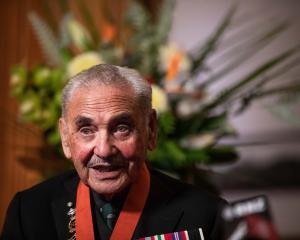
The smart way to get around is getting smarter, Debbie Hopkins writes.

Gone are the days when, at best, your home would have dial-up internet. When parents wanted to use the landline telephone, the internet connection would drop.
It seems like a lifetime ago that only "business people'' had mobile phones, and even then they weighed more than a house brick, and were only for phone calls.
Nowadays, mobile phones, tablets, and wireless internet are commonplace. When we get lost in a new city, we can use Google Maps to find our way. When we need a car-parking space, there is an app for that.
These mobile technologies are helping us to move in a variety of ways. But they also have another use that is starting to come into play.
The term "smart mobilities'' refers to the use of these types of technologies, and real-time data, to make the urban transport system run more smoothly.
For instance, using sensors, vehicle-to-vehicle communications, and vehicle to infrastructure communication, the smart network can know where traffic congestion is building and control the traffic flow accordingly.
This could involve manipulating the traffic lights, and offering real-time traffic information.
There are also opportunities for integrated transport management systems, which can make public transport a more attractive transport option, and ensure seamless door-to-door travel.
There are examples of cities internationally that are adopting this approach to solve their transport dilemmas (e.g. congestion, local air pollution) and to make cities nicer places to live.
In Amsterdam, they have adopted a Smart City approach (www.amsterdamsmartcity.com), which means they are using smart technologies to make it a more liveable city, but also to find smart solutions to the city's problems, and to promote economic growth in new business areas.
This includes smart mobility, smart living, smart society, and living labs.
For its transport system, the Amsterdam smart mobility system is promoting electric vehicles, and piloting a vehicle-to-grid programme that will allow residents to store locally produced energy in their vehicle battery.
It is also promoting vehicle sharing to replace vehicle ownership, aided by the use of mobile phone and internet technologies.
And these advancements are being trialled in a range of projects that include private transport (e.g. smart parking), freight/courier delivery (e.g. last mile food logistics) and public-private travel (e.g. Yeller: share your taxi app).
Now, since Dunedin is New Zealand's Gigatown, how about we put some of that ultra-fast broadband connectivity to good use?
I vote we roll up our sleeves, and create a Smart Dunedin.
P.S. Auckland, Wellington and Christchurch have already started ... we'd better get a move on!
- Debbie Hopkins is a researcher in low carbon mobility and energy demand, University of Oxford, UK.












